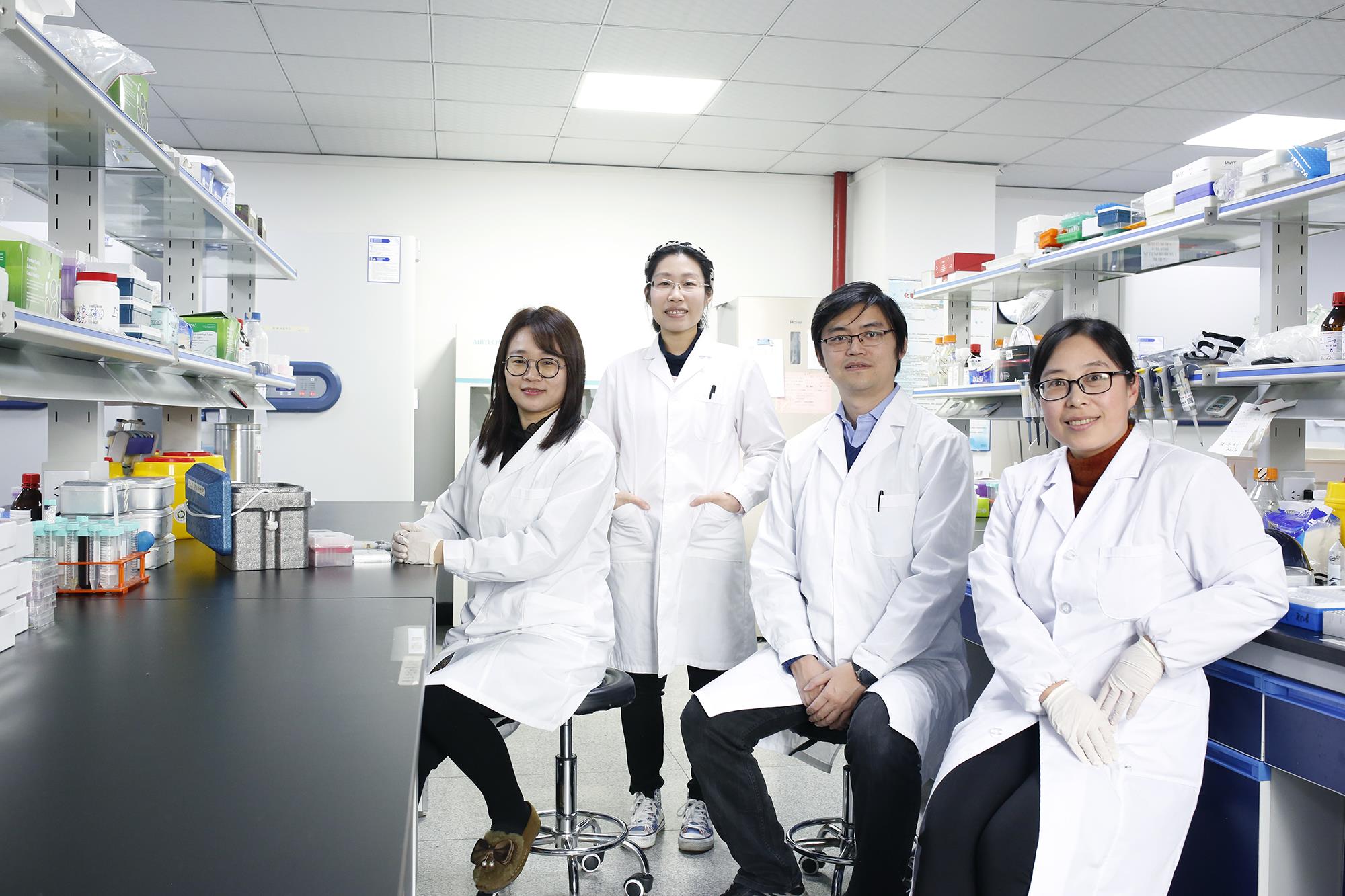ECNU scientific research team has made an important breakthrough in the field of obesity and metabolic diseases. They found that human beige fat can greatly relieve obesity symptoms and improve metabolic disorders through local hyperthermia that can activate heat production. This research result was published online on March 4 inCelland was further selected as the cover paper.

▲Cellcover design: local hyperthermia promotes the browning of white fat and improves metabolic health. The idea is taken from the Phoenix story (The legend of the immortal bird and Phoenix Nirvana in Greek mythology). After hyperthermia, white fat will undergo browning, emerge out phoenix and bring health to human beings.
Fat can be categorized into different varieties. Mammals, including humans and mice, have white, brown, and beige fat, each of the three varieties having a different function.
White fat is responsible for storing excess heat energy, brown fat is the burnable fat that can be converted into heat, and beige fat is a newly discovered variety, which exhibits the characteristics of white fat at rest, but features the potential of brown fat which can promote heat production and energy consumption in cold or when the β-epinephrine is activated.
In adults, the beige fat, scattered on the sides of the neck, the upper back, near the collar bone and around the spine, can sense coldness and enhance sugar absorption and metabolism.
Researchers Ma Xinran and Xu Lingyan from the Obesity and Metabolic Disease Research Team of the School of Life Sciences of ECNU, together with Prof. Hu Cheng from the Metabolic Disease Genetics Research Team of the Sixth People's Hospital Affiliated to Shanghai Jiaotong University, and researcher Zhang Qiang from the Biomass Nanomaterials Research Team of the School of Life Sciences of ECNU, jointly found that local hyperthermia therapy (LHT) targeting beige fat promoted its activation in humans and mice. LHT achieved using a hydrogel-based photothermal therapy activated beige fat, preventing and treating obesity in mice without adverse effects. HSF1 is required for the effects since HSF1 deficiency blunted the metabolic benefits of LHT. HSF1 regulatesHnrnpa2b1(A2b1) transcription, leading to increased mRNA stability of key metabolic genes. Importantly, analysis of human association studies followed by functional analysis revealed that the HSF1 gain-of-function variant p.P365T is associated with improved metabolic performance in humans and increasedA2b1transcription in mice and cells. Overall, the researchers demonstrate that LHT offers a promising strategy against obesity by inducing beige fat activation via HSF1-A2B1 transcriptional axis.
“Based on the genetic and mechanism analysis on a population of more than 10,000 people, it has been found that HSF1 functional mutant p. Pro365THr is closely associated with the improvement of glycolipid metabolism in the population, and confirmed that this functional mutation will increase the expression of A2B1, indicating that HSF1 also plays an important role in human metabolism.” Jia Weiping, Academician of the Chinese Academy of Engineering serving at the Sixth People's Hospital Affiliated to Shanghai Jiaotong University, said that this innovative finding that beige fat can sense local mild heat effects and activate heat production through HSF1 which can safely and effectively improve metabolic disorders such as obesity and insulin resistance, establishes an important research foundation for subsequent clinical drug development and precision therapy.

Researcher Ma Xinran graduated from Nanjing University with the Bachelor's Degree in 2006, and in 2011, he received his Ph.D. from Shanghai Institutes for Biological Sciences, Chinese Academy of Sciences, and went to U.S. National Institutes of Health (NIH) for postdoctoral research. Since 2016, he has been serving as a researcher at the School of Life Sciences of ECNU, and was selected as the “Excellent Youth” of the National Natural Science Foundation of China, the “Oriental Scholar” Distinguished Professor of Shanghai Municipal Colleges and Universities, “Pujiang Talent Program” of Shanghai Municipality, the “Top-notch Young Talent of Shanghai Municipality, and “Zijiang Outstanding Young Scholar” of ECNU.
Research Xu Lingyan received her Bachelor’s Degree from Fudan University in 2005 and Ph.D. from Shanghai Institutes for Biological Sciences, Chinese Academy of Sciences in 2010, serving as Assistant Researcher at the Institute of Health Sciences. She went to U.S. National Institutes of Health (NIH) for postdoctoral research in 2011. Since 2017, she has been serving as a researcher at Shanghai Key Laboratory of Regulatory Biology, School of Life Sciences, ECNU. She was enlisted in “Pujiang Talent Program of Shanghai Municipality and elected as Zijiang Young Scholar of ECNU.
Author: Xu Xincheng
